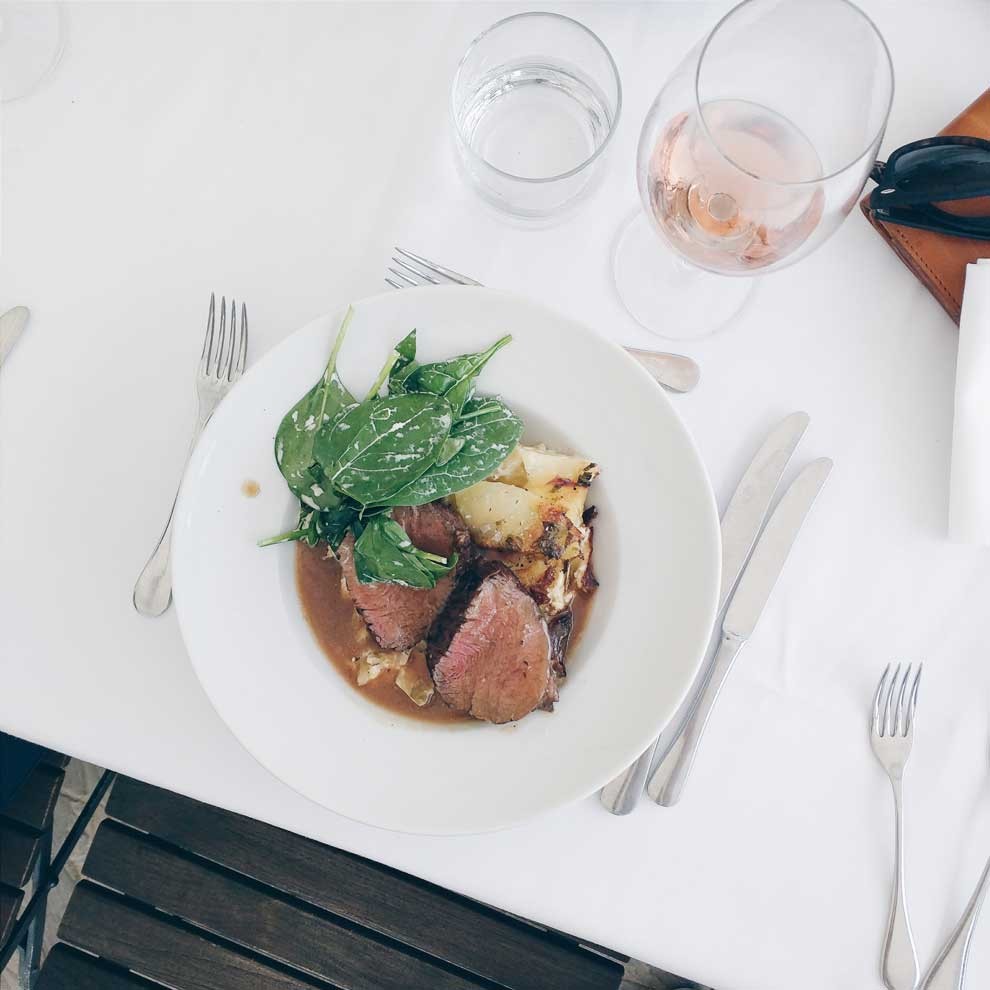Roast Beef

What is Roast Beef?
The Roast Beef you enjoy is more likely than not cut from either the silverside or topside of a cow. Both of these muscle regions of a beef carcass are above the legs – an area that is very large and hardworking – making the meat you use for a roast beef usually quite lean with fine ribbons of marbling (or intermuscular fat).
Roast beef nutritional facts | |
| Serving size of 85g | |
| Calories 163 | |
| Per Serving | % Daily Value |
| TOTAL FAT 7g | 11% |
| Saturated 2.9g | 14% |
| Polyunsaturated Fat 0.3g | |
| Monounsaturated Fat 2.8g | |
| Cholesterol 67mg | 22% |
| Sodium 48mg | 2% |
| Sodium 48mg | 2% |
| Potassium 288mg | 8% |
| Total Carbohydrates 0g | 0% |
| Dietary Fiber 0g | 0% |
| Sugars 0g | |
| Protein 24g | |
| Vitamin A | 0% |
| Vitamin C | 0% |
| Calcium | 1.3% |
| Iron | 8.2% |
Choosing the perfect Roast Beef
Picking the right cut for your roast beef can be a daunting task – especially when you're looking for premium taste and tenderness and roast beef that is healthy for you and the environment, as well as coming from cows that have lived healthy and happy lives! There are just so many factors to consider! Though we're only going to cover 2 considerations here, we recommend you familiarise yourself with our masterclass on buying meat online and our discussion on labels you should ask for when buying from an online butcher.
Natural England Assured Roast Beef

One of the many characteristics of sustainable beef is low environmental footprint! The absolute kings when it comes to ensuring this is the case is the Natural England Certification scheme. Roast beef that comes from cattle that have been farmed on Natural England accredited farms have promoted:
- The sustenance of the naturally occurring surrounding biodiversity
- Provision and improvement of habitats for contextual wildlife
- Protection and wardening of surrounding green landscapes!
Buy Natural England Accredited Roast Beef
Preventative Antibiotic-free Roast Beef
This is a tough one to get right. Preventative (and often very strong) antibiotics are used as a measure by many farmers and beef producers to make sure their cattle don't contract and spread diseases. While this idea in itself isn't an issue, in practice what this means is that large scale industrialised farmers use preventative antibiotics as means to mitigate the risks of low welfare and health standards of cows on the beef they produce.
What's more, The World Health Organization has strongly urged farmers to cease using such preventative antibiotics on livestock due to the serious risk it poses to the health of the human population. Because man has become increasingly resistant to antibiotics, and we're not producing new ones, eating treated beef could pose serious health risks.
Buy Preventative Antibiotic-free roast beef
How to cook Roast Beef

- Take the well-rested, well-seasoned beef roast and place it on a casserole dish and into the oven (preheated at 240 degrees) for 15 minutes.
- After 15 minutes drop the temperature down to 190 degrees. The time you let the roast sit in the oven from this point on depends on firstly the level of “rareness” you want your beautiful roast beef to have, and second, the equipment you have in your kitchen:
- Rare with a thermometer: Keep in the oven until the thickest part of the beef joint reaches 60 degrees.
- Rare without a thermometer: 10-15 minutes on the reduced heat.
- Medium with a thermometer: Keep in the oven until the thickest part of the beef joint reaches 70 degrees.
- Medium without a thermometer: 15-20 minutes on the reduced heat.
- Well done with a thermometer: Keep in the oven until the thickest part of the beef joint reaches 80 degrees.
- Well done without a thermometer: 20-25 minutes on the reduced heat.
- Once done, allow to rest for as long as it’s been cooking so the juices spread throughout the roast.
What to serve with Roast Beef
Roast beef goes with just about anything and you’ve got your own imagination —so use it! One thing we will say here though is never, ever throw away the juices of the baked roast. That’s the best part: Natural Gravy. It's just so gravy.